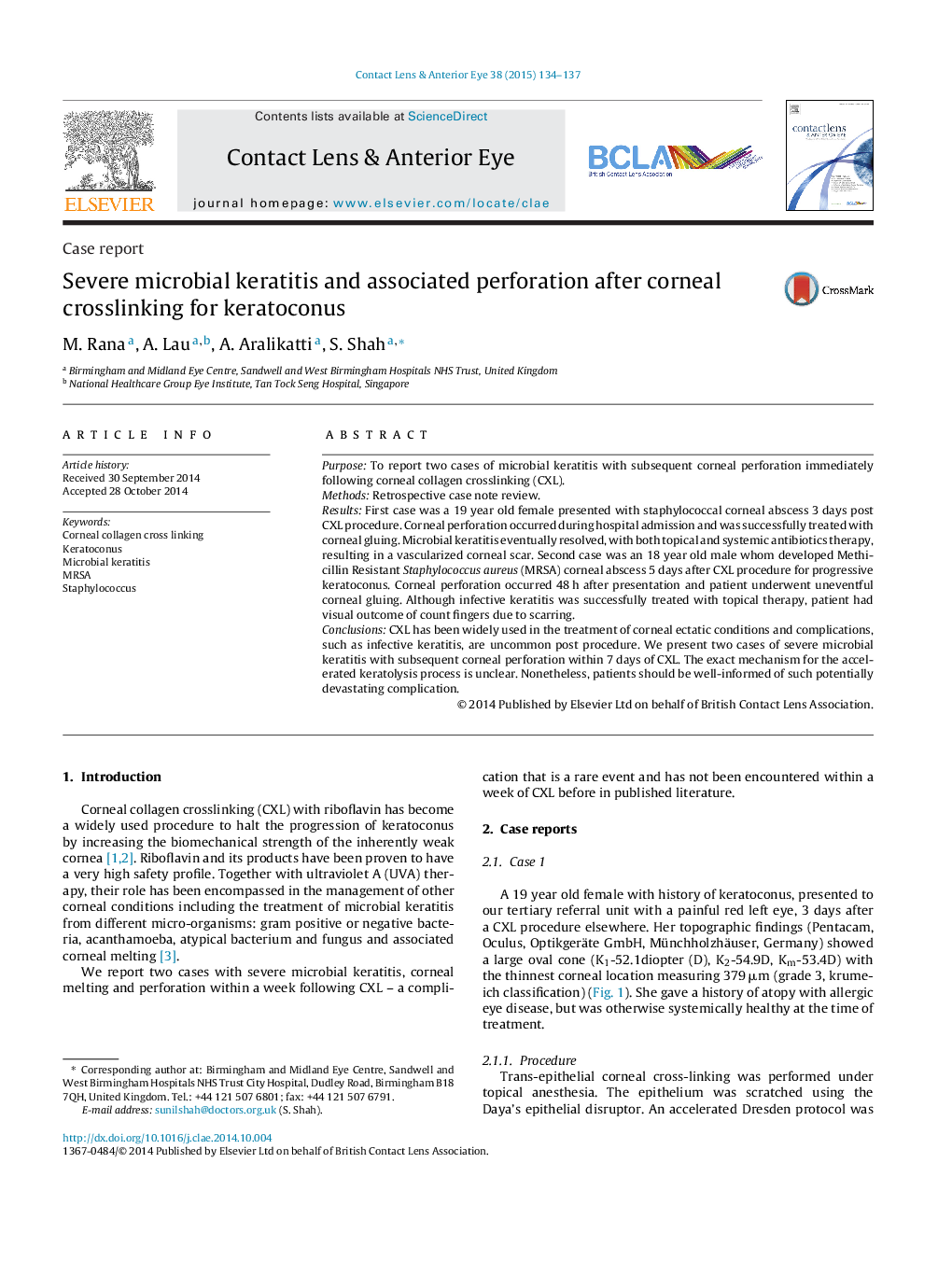| کد مقاله | کد نشریه | سال انتشار | مقاله انگلیسی | نسخه تمام متن |
|---|---|---|---|---|
| 2693532 | 1143546 | 2015 | 4 صفحه PDF | دانلود رایگان |
• This paper shows 2 keratoconics, who underwent corneal cross-linking causing severe microbial keratitis and perforation.
• Perforation happened within seven days of procedure being done. This has never been reported in the past.
• Bandage CL was used, which may have caused the pooling of tears, leading to colonization of the microbes and perforation.
PurposeTo report two cases of microbial keratitis with subsequent corneal perforation immediately following corneal collagen crosslinking (CXL).MethodsRetrospective case note review.ResultsFirst case was a 19 year old female presented with staphylococcal corneal abscess 3 days post CXL procedure. Corneal perforation occurred during hospital admission and was successfully treated with corneal gluing. Microbial keratitis eventually resolved, with both topical and systemic antibiotics therapy, resulting in a vascularized corneal scar. Second case was an 18 year old male whom developed Methicillin Resistant Staphylococcus aureus (MRSA) corneal abscess 5 days after CXL procedure for progressive keratoconus. Corneal perforation occurred 48 h after presentation and patient underwent uneventful corneal gluing. Although infective keratitis was successfully treated with topical therapy, patient had visual outcome of count fingers due to scarring.ConclusionsCXL has been widely used in the treatment of corneal ectatic conditions and complications, such as infective keratitis, are uncommon post procedure. We present two cases of severe microbial keratitis with subsequent corneal perforation within 7 days of CXL. The exact mechanism for the accelerated keratolysis process is unclear. Nonetheless, patients should be well-informed of such potentially devastating complication.
Journal: Contact Lens and Anterior Eye - Volume 38, Issue 2, April 2015, Pages 134–137
